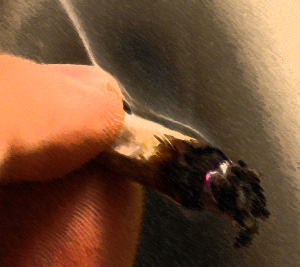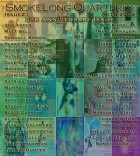“California Fruit” is a captivating story, Meg, one that held me rapt as I read it many times while working with it. It is a coming of age story, wouldn’t you say? A story of loss of innocence? Why are we so fond of these kinds of stories? Why are they so endlessly engaging? Are we ever through with losing our innocence?
Thank you! Yes, I believe it is a coming of age story. The girl has lost her father, her home, her extended family. And yet she’s found fruit, and synergistically discovered her sexuality.
I still feel vulnerable and hopeful though I’m almost half a century old. Some people remain child-like. They refuse to harden. My muse is Ruth Gordon’s character in Harold and Maude. Maude never gives up on innocence even though she’s a concentration camp survivor. Harold has given up on innocence when they meet and that is what’s so interesting.
We love these stories because they are about the good in all of us. We can almost touch it again by connecting with fictional characters.
You don’t name the characters in this story, neither the narrator nor the boy she meets. I think it’s a great choice, but I’d like to ask, Why not? What does leaving them unnamed do for the story? Do they become more like types, or does their individuality rise up without being named?
I felt that the characters are archetypal and that names might distract the reader with too much specificity in such a short piece. We identify with names so strongly… I wanted them to be mysterious. I specifically chose not to name the boy because he is nearly a mirage.
The boy in “California Fruit” is “exotically grafted,” which is a large part of the narrator’s attraction to him. What are the questions of race we are afraid to ask? Should we be afraid of them?
We all suffer from feeling different than each other, and being self-conscious about asking questions related to race. In this story a girl tries to connect with someone “other” and doesn’t have preconceived ideas about race. Her character is not afraid of the exotic boy– instead, she is very attracted because the differences.
What exactly is a loquat tree? Why does it, in particular, figure so prominently in the story, amongst all the other fruits? Which seed does the boy find in her bellybutton? The suggestiveness of that image is great. Which images do you find coming up in your stories all the time?
The loquat tree figures prominently because it is the most exotic tree to the girl. She had never heard of loquats until she arrived in California. The tree is most like the boy.
Loquats are a delicious fruit I grew up with in Southern California. They have enormous, polished looking seeds. The seed that the boy finds in her belly button is a tangerine seed—small, slippery and sneaky. This really happened to me growing up. I’d find seeds in my bellybutton. I was sloppy and loved fruit so much–it got me through a difficult childhood. Eating fruit that grew in our back yard was strangely comforting.
In almost all my stories the main character is an emotional risk-taker. Often my stories involve enormous loss, or what the main character perceives as such. The reader may feel otherwise.
This issue marks SmokeLong‘s fifth anniversary, which has the staff thinking a lot about longevity and growth. There’s no denying the literary arena is fickle, with journals coming and going, writers shooting onto the scene then falling into a long hiatus, editors changing houses, agents merging, trends in what’s hot, what’s not. How do you, as a writer, endure the ups and downs? Have you experienced any setbacks? What measures have you taken to grow?
Well, publications like yours keep us all going. The carefulness and intelligence SLQ embodies is wonderful. Devotion to what we love will keep us well through these difficult times. I believe these virtual communities will become even more necessary.
After I quit acting, I started writing. I wrote for nearly fifteen years without sending anything out. I just wrote for self-expression. My life was hectic raising a child and running a business. Then I got ill six years ago and was told that I might not ever walk again. I’m walking again—fighting hard and doing well. After being disabled and living in pain and isolation I learned that doing things now—not putting them off—is everything.
During my illness I read and read. Michael Chabon, Richard Ford, Raymond Carver, Haruki Murakami. Looking at online magazines like SLQ, Quick Fiction, and Elimae I discovered Kathy Fish, Kim Chinquee, Pia Z. Ehrhardt. Mary Miller, Claudia Smith, Darlin’ Neil… The list goes on and on.
I began sending my work out for the first time seven months ago. My poetry group helped me tremendously. When I’m working on poetry, I’m working on flash.



 The core workshop of SmokeLong Fitness is all in writing, so you can take part from anywhere at anytime. We are excited about creating a supportive, consistent and structured environment for flash writers to work on their craft in a community. We are thrilled and proud to say that our workshop participants have won, placed, or been listed in every major flash competition. Community works.
The core workshop of SmokeLong Fitness is all in writing, so you can take part from anywhere at anytime. We are excited about creating a supportive, consistent and structured environment for flash writers to work on their craft in a community. We are thrilled and proud to say that our workshop participants have won, placed, or been listed in every major flash competition. Community works.